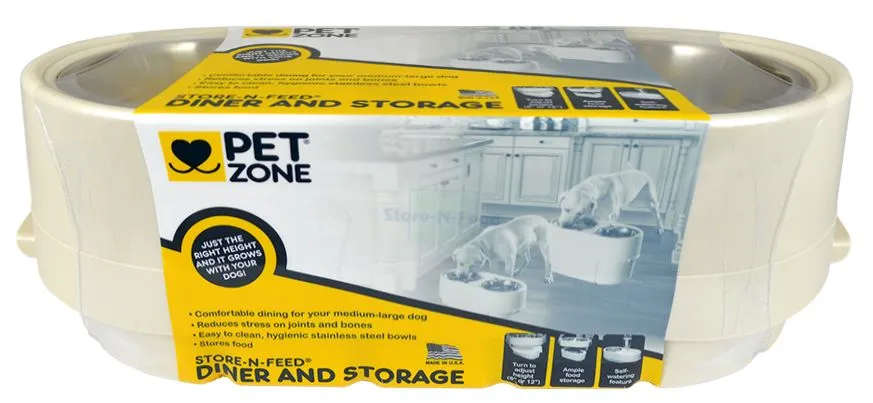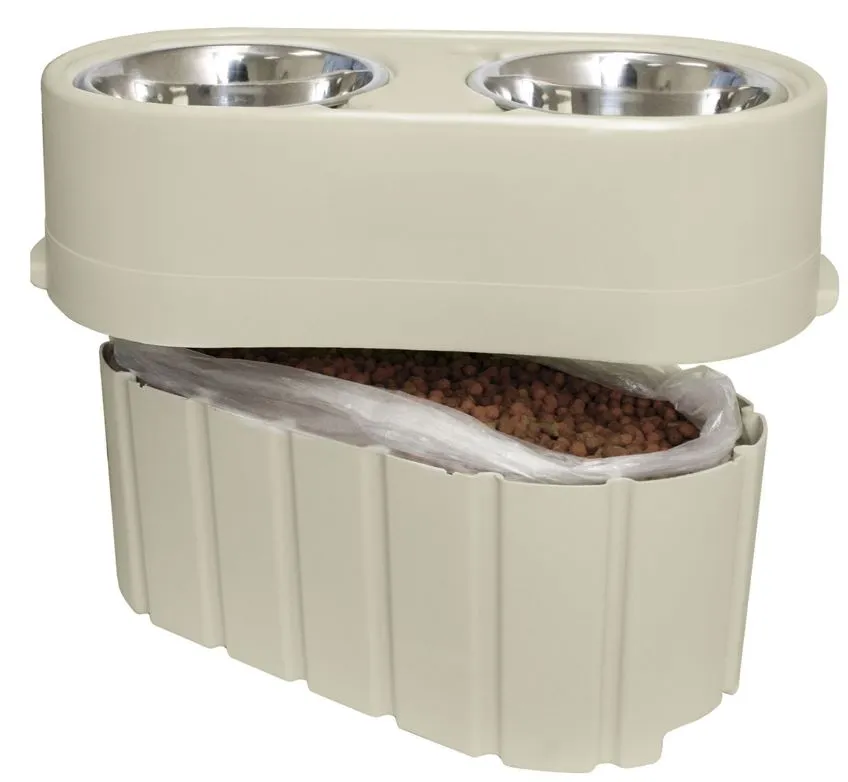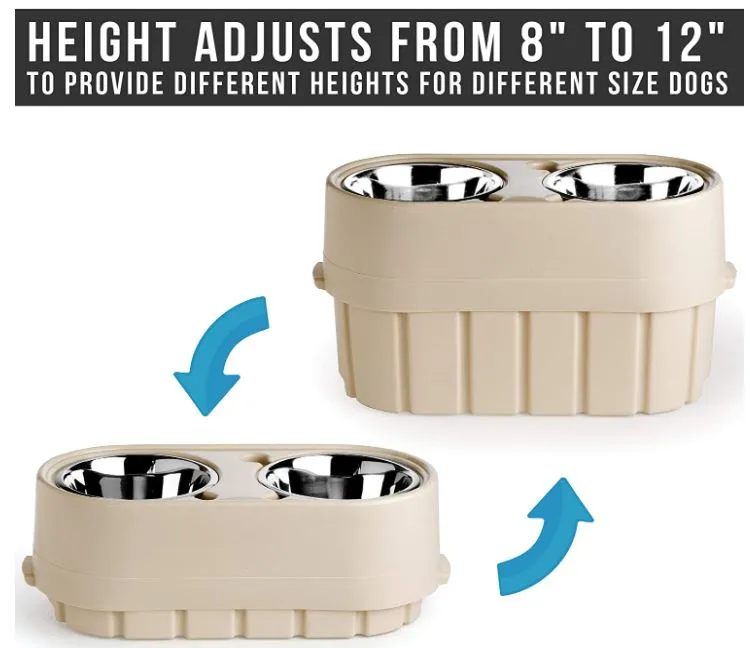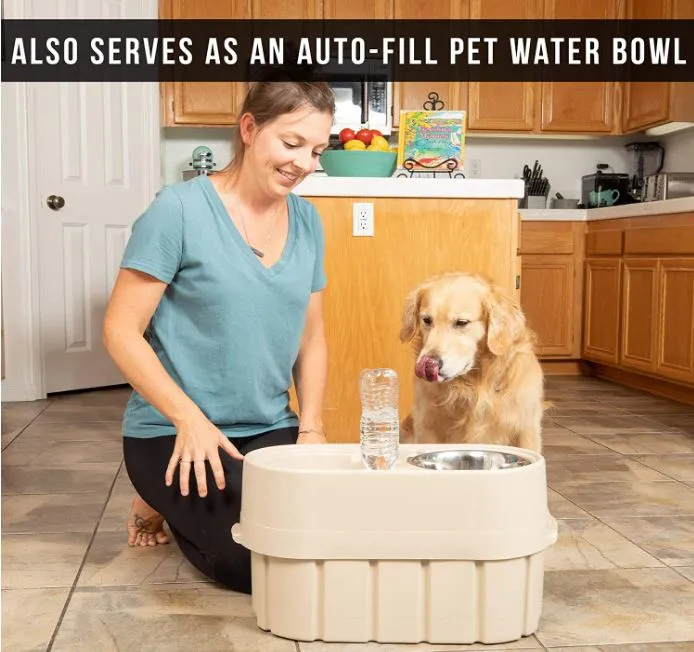Bringing home the perfect feeding solution for your furry friend can transform mealtime from chaos to convenience. The Store-N-Feed elevated dog feeder stands out as an all-in-one marvel, combining food storage, adjustable height, and hydration features tailored for dogs of all ages and sizes. Designed by PET ZONE, this innovative product addresses common pet care challenges like joint strain, messy floors, and bulky storage bins, making it a top choice for dog owners seeking healthier dining experiences.
Convenient Dog Food Storage Container
Gone are the days of wrestling with oversized dog food bags in cramped kitchens. The Store-N-Feed features a generous storage compartment that holds up to 15 pounds of dry kibble, keeping it fresh and accessible with a simple pour mechanism. This space-saving design is ideal for apartments or small homes, eliminating the need for separate bulky bins that take up valuable counter space.
Pet owners often struggle with food spoilage and pests, but this sealed container helps maintain freshness while reducing waste. According to pet nutrition experts, proper storage preserves essential nutrients in dry food, ensuring your dog gets the best nutrition every meal.
 Store-N-Feed elevated dog feeder showcasing the 15-pound food storage compartment
Store-N-Feed elevated dog feeder showcasing the 15-pound food storage compartment
Reduces Joint Stress and Promotes Better Posture
Veterinarians widely recommend elevated dog feeders to alleviate pressure on your pet’s neck, back, and joints. For mature dogs prone to osteoarthritis, eating from a raised bowl minimizes straining and awkward postures that can exacerbate arthritis over time. The Store-N-Feed’s elevated platform supports natural alignment, improving overall physical health and comfort during meals.
Studies from veterinary associations highlight how elevated feeding can reduce the risk of bloat and improve posture, particularly in larger breeds like Labradors or German Shepherds. By lifting the bowl to an optimal height, this feeder helps prevent long-term mobility issues, allowing senior dogs to enjoy meals without discomfort.
 Senior dog comfortably eating from the elevated Store-N-Feed feeder to reduce joint stress
Senior dog comfortably eating from the elevated Store-N-Feed feeder to reduce joint stress
Adjustable Height for a Healthy Feeding Position
One size doesn’t fit all when it comes to dog feeding. The Store-N-Feed adjusts seamlessly from 8 inches to 12 inches, accommodating puppies, small breeds, and large dogs alike. This customization ensures the perfect height for healthy digestion, as raised positions encourage slower eating and better posture, reducing gulping that leads to gas or regurgitation.
Healthy digestion starts with proper positioning—experts note that elevated bowls promote upright swallowing, aiding nutrient absorption and minimizing digestive upset. Whether your pup is a tiny Chihuahua or a hefty Bulldog, this feature grows with your dog, providing long-term value.
 Adjustable height mechanism of the Store-N-Feed dog feeder set for medium-sized breeds
Adjustable height mechanism of the Store-N-Feed dog feeder set for medium-sized breeds
Innovative Self-Watering System Keeps Pets Hydrated
Hydration is crucial for your dog’s health, yet water bowls often get knocked over or go stale. The Store-N-Feed’s unique self-watering design lets you attach any standard two-liter bottle to one of the bowls, dispensing fresh water on demand. A built-in spill ridge catches drips, keeping floors clean and encouraging consistent drinking.
This gravity-fed system mimics natural hydration sources, promoting better urinary health and preventing dehydration, especially in active or hot-weather dogs. Pet care professionals emphasize that fresh water availability supports kidney function and overall vitality.
 Self-watering feature of Store-N-Feed with attached water bottle and spill-proof ridge
Self-watering feature of Store-N-Feed with attached water bottle and spill-proof ridge
Rust-Resistant Stainless Steel Bowls for Easy Maintenance
Durability meets practicality with two included stainless-steel bowls that resist rust and bacteria buildup. Dishwasher-safe for effortless cleaning, they pair perfectly with slow-feeder inserts like the Our Pets Spiral to prevent fast eating and boredom during meals. This hygienic design ensures meals are safe and sanitary, free from scratches or odors that plague plastic alternatives.
Maintaining clean bowls is a cornerstone of pet health—vets advise against porous materials that harbor germs. The Store-N-Feed’s bowls withstand daily use, making upkeep simple for busy owners.
 Stainless steel bowls from the Store-N-Feed elevated feeder, ready for dishwasher cleaning
Stainless steel bowls from the Store-N-Feed elevated feeder, ready for dishwasher cleaning
Why the Store-N-Feed is a Game-Changer for Dog Owners
Beyond its standout features, the Store-N-Feed excels in versatility and pet wellness. It tackles multiple pain points: storage hassles, joint health, digestion issues, hydration, and cleaning drudgery. Ideal for multi-dog households or those with senior pets, it promotes longevity and happiness through thoughtful design.
Compared to basic feeders, this product’s adjustability and integrated storage offer superior value, often praised in pet forums for its sturdiness. With an MSRP around $65.99, it’s an investment in your dog’s quality of life, backed by Cosmic Pet’s reputation for innovative solutions.
In summary, the Store-N-Feed elevated dog feeder with food storage revolutionizes daily routines, supporting joint health, digestion, and hygiene as recommended by vets. Consult your veterinarian to see if an elevated setup suits your dog’s needs, and consider pairing it with quality kibble for optimal results. Upgrade your pet’s mealtime today—your dog will thank you with every wag! Explore more dog care essentials on our site for tailored feeding tips.
